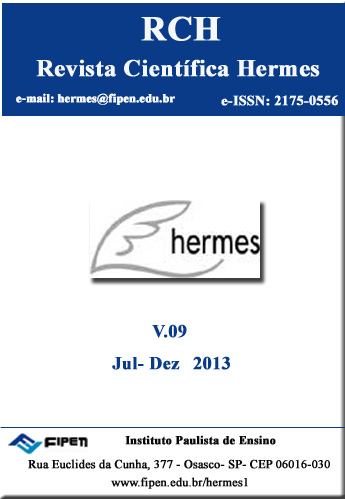Relationship between hierarchical levels and the competitiveness in employees’ views in a unit of a brazilian metallurgical company.
DOI:
https://doi.org/10.21710/rch.v9i0.94Keywords:
nivelamento organizacional, modelo de gestão, unidade de negócioAbstract
The market competition leads companies to develop strategic plans. The challenge is to deploy a plan and commit employees in carrying out actions aligned to the goals and to hierarchical levels. This research reveals the management model used in a business unit of a metallurgical industry and the relationship between its hierarchical levels. In order to reach our goals, an evaluation tool called flexible organizational model developed by Mendes (2002) was used. We applied a questionnaire Likert type scale of five - response numbered one represented total disagreement and number five, total agreement. We calculated the median level of agreement on the Likert scale and the degree of agreement and disagreement through dichotomization of the data. The study found a high degree of concordance with flexible organizational model applied to this business unit. It also confirmed the leveling between the hierarchical levels studied, as elements of increased competitiveness in the perception of respondents.
References
Anbreu, M.J.C. & Silva, G.A.V. 2006. Contratos psicológicos nas organizações: bases de sua construção. Revista de Gestão USP 13: 93-104.
Barreto, A.M. 2006. Gestão da informação: ferramenta da produção ou da significação? Informação & Sociedade: Estudos 16(2): 51-61.
Barreto, A.F. & Pozo, H. 2011. A Flexibilidade Organizacional como Fator Estratégico para a Obtenção de Vantagem Competitiva: um Estudo nas Pequenas Indústrias Metalúrgicas da Região de Osasco-SP. Gestão & Regionalidade 27(80).
Davenport, T.H. 1994. Reengenharia de processos. Campus, Rio de Janeiro.
Golla, E. & Johnson, R. 2013. The Relationship between Transformational and Transactional Leadership Styles and Innovation Commitment and Output at Commercial Software Companies. The Business Review 21(1): 337-343.
Ignatiadis, I. & Nandhakumar, J. 2007. The impact of enterprise systems on organizational resilience. Journal of Information Technology 22(1): 36-36.
Mendes, P.J.V. 2002. Flexibilidade organizacional análise de uma experiência de organização e divisão do trabalho por processo em ambiente de P&D. Dissertação de mestrado. Universidade Estadual de Campinas, Campinas.
Mintzberg, H. 2009. Criando organizações eficazes: estruturas em cinco configurações. Atlas, São Paulo.
Morgan, G. 1996. Imagens da organização. Atlas, São Paulo.
Motta, F.C.P. & Vasconcelos, I.F.G. de. 2006. Teoria geral da administração. Cengage Learning, São Paulo.
Nonaka, I. & Takeuchi, H. 1997. Criação de conhecimento na empresa. Campus, São Paulo.
Oliveira, D.P.R. de. 2002. Planejamento Estratégico: conceitos; metodologia e práticas. Atlas, São Paulo.
Oliveira, R.R. & Alves Filho, B.F. 2007. Gestão do Conhecimento Organizacional no nível técnico-gerencial de uma empresa. Um estudo do Serpro-Recife. Anais do 31º ENANPAD. Rio de Janeiro.
Soares, D.P.S.; Silva, C.L.O. & Castro, J.M. 2012. A influência do ambiente e da cultura organizacional no papel da área de recursos humanos: um estudo comparativo de casos em duas empresas de médio porte. Revista Alcance – Eletrônica 19(4): 441-460.
Storbacka, K. 2012. Strategic account management programs: alignment of design elements and management practices. The Journal of Business & Industrial Marketing 27(4): 259-274.
Sveiby, K.E. 1998. A Nova Riqueza das Organizações: gerenciando e avaliando patrimônios de conhecimento. Campus, Rio de Janeiro.
Toffler, A. 1985. A empresa flexível. Record, Rio de Janeiro.
Wright, D.B. 2009. Care in the Country: A Historical Case Study of Long-Term Sustainability in 4 Rural Health Centers. American Journal of Public Health 99(9): 1612-1618.
Downloads
Published
How to Cite
Issue
Section
License
Copyright (c) 2013 Revista CientÃfica Hermes - FIPEN

This work is licensed under a Creative Commons Attribution 4.0 International License.






